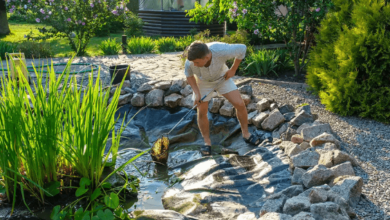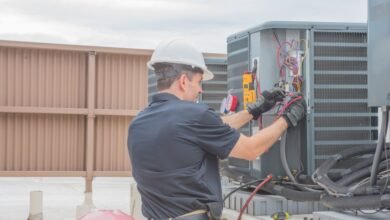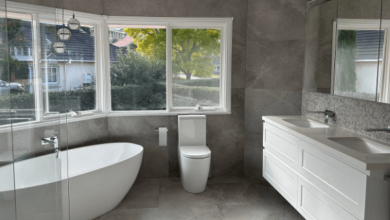Creating a Comfortable Home: Tips for Adapting Your Space for Elderly Family Members

As family members age, their living environments often require adjustments to cater to their evolving needs. Creating a comfortable and safe home for elderly relatives not only enhances their quality of life but also provides peace of mind for caregivers. From mobility considerations to smart home technologies, the transformation of a living space can make a significant difference in the everyday life of a senior. In this article, we will explore key strategies for adapting your home to accommodate the needs of elderly family members.
In the process of reorganizing and adapting your space for aging loved ones, you may find yourself needing to temporarily store furniture, décor, or other household items. Utilizing self storage units Columbia offers a convenient and secure way to clear out necessary space without parting with belongings that still hold personal or practical value. With flexible access and reliable protection, these storage units help maintain a clutter-free, senior-friendly home while ensuring your possessions remain safely tucked away for future use.
Making Mobility Within the Home Easier and Safer
Mobility challenges are often at the forefront of home adaptation for the elderly. Staircases, for instance, can be a major barrier, leading to the need for stairlifts or even the reconfiguration of living spaces to ensure necessities are on one level. Hallways and doors may need to be widened to accommodate walkers or wheelchairs, ensuring seamless movement throughout the home.
Maintaining a comfortable indoor environment is equally important for seniors facing mobility challenges. Reliable HVAC service providers like Western Hills Heating and Air Conditioning in Sevierville, TN ensure that heating and cooling systems function efficiently, preventing extreme temperatures that could lead to health risks such as dehydration or hypothermia. Proper ventilation also improves indoor air quality, reducing allergens and respiratory issues.
Floors are another key area of focus. Polished surfaces may need to be replaced with non-slip options or covered with securely fastened rugs to mitigate tripping hazards. The goal is to make every step within the home as safe as possible.
Adjusting Living Spaces for Comfort and Accessibility
The arrangement of living spaces significantly impacts the day-to-day comfort of elderly individuals. Furniture should be chosen not only for its ergonomic benefits but also for ease of access. Lower seating options with firm support can assist with sitting and standing, while rounded corners may reduce the risk of injury from bumps.
Technological adaptations can contribute greatly to an elderly person’s independence. Remote-controlled devices, voice-activated systems, and timers can control everything from window shades to thermostats, eliminating the need to perform challenging physical tasks. Bringing in services such as meal delivery services can also ease the burden of food preparation.
Living spaces should promote social interaction, a key component of emotional well-being. Room layouts that encourage conversation and allow for family gatherings, while still providing quiet spaces for relaxation, are ideal. These adjustments make a world of difference in a senior’s daily life.
Implementing Smart Home Technologies for Elder Care
The advent of smart home technologies has revolutionized elder care living spaces. Automation systems that control lighting, thermostats, and security features can drastically reduce the complexity of managing environmental controls for seniors. For instance, automated thermostats eliminate the need to fumble with small buttons or dials, a task that can be challenging for arthritic fingers.
Emergency response technologies warrant particular attention. Medical alert systems can be integrated into smart home networks, ensuring that help is available at the touch of a button—or even automatically if a fall is detected. This fosters both autonomy and safety within the home environment.
For cognitive support, digital voice assistants can provide reminders for medications, appointments, or even social engagements, thereby maintaining a schedule and helping to preserve mental acuity. These devices can be programmed to address unique needs and preferences, making them invaluable aids for daily living.
Prioritizing Bathroom Safety and Convenience Features

Bathroom adaptations are critical for elderly individuals due to the high risk of slips and falls in wet areas. Non-slip mats, walk-in tubs, or barrier-free showers with seating can enhance safety and encourage self-care. Strategically placed grab bars and easily operable faucets also make the bathroom more user-friendly for those with limited mobility or strength.
Illumination is essential in the bathroom. The installation of bright, motion-activated lights can make late-night visits less hazardous, and removing locks from doors can prevent accidental entrapment. Prioritizing visual clarity and ease of access permits safer navigation of the space.
Elevated toilet seats, bidets, and handheld showerheads offer additional layers of independence and dignity. These elements allow elderly individuals to maintain personal hygiene routines with minimal discomfort or assistance.
Altogether, transforming your home to support the complex needs of elderly family members is a profound form of care. By prioritizing safety, comfort, accessibility, and independence, you can fashion a living space that not only meets the practical demands of aging but also enriches the lives of your loved ones. Overall, these adaptations help ensure that our seniors can live with dignity and joy in the comfort of their own homes.



